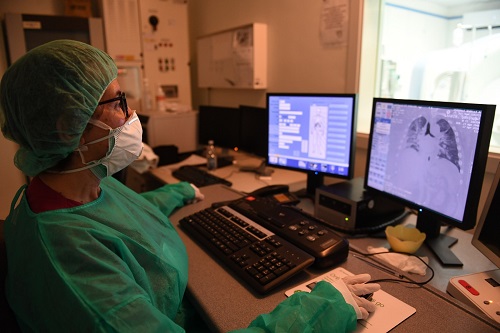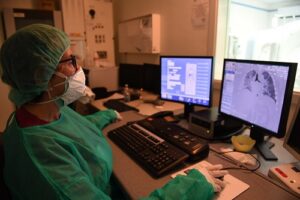New variant: Covid returns to show up also in Canada, US and Italy
TORONTO – We return to talk about Covid-19. What seemed like a distant (bad) memory, reappears with a new “code name”: EG.5, i.e. a subvariant of the coronavirus on the rise in some parts of the world and “landed” also in Canada, at least since May according to the Public Health Agency of Canada (PHAC).
Experts say that the latter strain seems to be more contagious and able to overcome our immune defenses made (apparently) stronger by the mix of vaccines and infections to which we have been subjected in the last three years, but at least for the moment there is no evidence that it can cause more serious disease.
Subvariant EG.5 accounted for 36% of COVID-19 cases in Canada between July 30 and August 5, according to initial PHAC data released by the CBC. In addition, EG.5 was found thirty-six times in the country’s municipal wastewater between May 15 and July 21. And while most wastewater had some of the lowest levels of Covid-19 since analyzes began in 2020 at the start of the summer, as of July 27 at least seven of the thirty-nine sites monitored by Canada’s Water Surveillance Dashboard wastewater reported an increase.
In addition, Ontario data shows that test positivity increased from about five percent to nearly seven percent in one month. And other parts of Canada are also seeing a slight increase in Covid-19 cases.
Similar situation in the United States, where EG.5 is estimated to have constituted 17.3% of all cases in the country in the last two weeks, making it the most common strain. In addition, the United States has also seen a jump in cases and hospitalizations in recent weeks.
However, it is not clear whether the new variant is driving this increase.
But what exactly is EG.5? It is a subvariant of Omicron (which remains the most common version of the SARS-CoV-2 virus in Canada). To better understand, we can take as a reference the words of Dr Angela Rasmussen, a virologist at the Organization for Vaccines and Infectious Diseases of the University of Saskatchewan, who states – reports the CBC – that Omicron is like the “great-grandparents” of all subvariants that followed. “They are all essentially ‘Omicron’: like a family with children, grandchildren and great-grandchildren” said the virologist.
Dr Caroline Colijn, a mathematician and epidemiologist at Simon Fraser University, told CBC that EG.5 mutations likely make it more contagious than previous Omicron subvariants. Dr Colijn, who is also a member of an interdisciplinary team of researchers called the Coronavirus Variants Rapid Response Network (CoVaRR-Net), suspects there could be an increase in EG.5 in the fall, but doesn’t foresee a ‘huge surge’ and, since there is still a lot of widespread immunity, she has no certainty that EG.5 could be more severe than other subvariants.
PHAC scientists, however, are “actively monitoring and evaluating EG.5 lineages” to see whether or not they could “change the severity or spread of disease or affect the effectiveness of diagnostic tests, vaccines or treatments for Covid-19”.
The United States, Europe and Asia have also initiated “special surveillance” of the EG.5. In Italy, for example, the new mutated form of the virus represents 8.8% of the sequences deposited in the Italian platform for genomic surveillance of variants (I-Co-Gen) in the last week of consolidated sampling, 10-16 July (data as of 31 July) , in co-circulation with XBB.1.9, XBB.1.5 and XBB.1.16, better known as Hyperion, Kraken and Arturo (Arcturus), all belonging to the large Omicron family.
In countries where the circulation of “Eris” (the other name given to EG.5) is more sustained – such as in the United Kingdom, where the new variant is currently the second most widespread after Arcturus – we are seeing an increase in hospital admissions, particularly among the elderly, although overall levels remain low. So far.
Pic da www.gomrc.it




